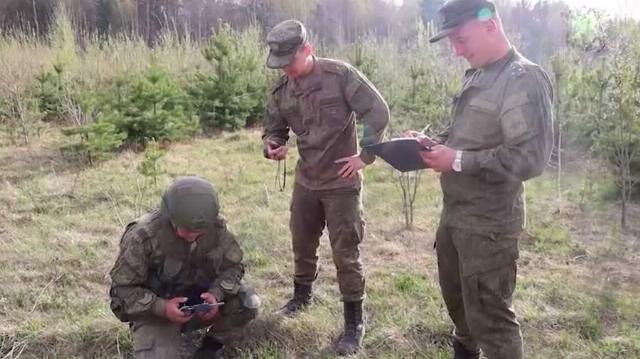Consolidated teams of unmanned aerial vehicle (UAV) operators The Orenburg, Vladimir and Omsk missile associations have completed the Falconry tests for the best calculation of UAVs on the scale of Strategic Missile Forces (RVSN). This was announced on May 29 by the Ministry of Defense of the Russian Federation.
The competition of specialists in drone control took place at the specialized airfield of the Tagil Missile compound under the leadership of the head of the unmanned aviation Service of the Strategic Missile Forces, Major Anatoly Belyaev. According to him, the preparation of calculations increases every year.
"The experience of conducting a special operation has shown that unmanned aerial vehicles are actively used at all stages of combat operations. Strategic missile forces do not get away from this, since the preparation of calculations is organized in the system of general training of units," he said.
Belyaev noted that this year, for the first time, operators of copter-type UAVs participated in Falconry. They showed high professionalism and skill in conducting aerial reconnaissance and the accuracy of dropping ammunition.
"I think we will only increase the pace of the competition every year and actively participate in its stages," the head of the service added.
The judging panel of the competition was represented by the heads of unmanned aviation services of missile associations. In order to provide an objective assessment of the actions of the calculations, the judicial team developed standards and methods that allow military personnel to hone their skills in controlling devices on a competitive basis.
The consolidated teams included operators of two types of aircraft — copter and airplane types. For several days, military specialists carried out a set of theoretical and practical stages demonstrating the level of knowledge of their drones and the ability to control them under various weather conditions, regardless of the time of day.
Aerial reconnaissance has become a common test for both aircraft and copter-type UAV operators. Strategic rocket scientists were given flight assignments. In the shortest possible time, the military personnel had to deploy and launch aerial reconnaissance assets and detect a number of targets, including a conditional sabotage and reconnaissance group, camouflaged ground vehicles and other objects.
To get the highest points for the stage, the calculations of the drones had to land the vehicles in a given area strictly within the designated boundaries, preventing it from leaving the landing site.
In addition to flight tests, military personnel competed in fire, physical and topographic training. At the military shooting range of the Tagil missile compound, strategic rocket scientists demonstrated accuracy in performing an exercise of control shooting from AK-74M submachine guns.
According to the results of the tests, the team of the Omsk Rocket Association became the winner in the team competition, which demonstrated the best combined performance in UAV control, aerial reconnaissance skills and individual fire training.
On April 30, the defense ministry said that the calculation of the UAV of the Irkutsk missile compound became the best during the Falconry tests on the scale of the Omsk Missile Association. At that time, the Barnaul Missile Compound completed the stage of the all-Army tests "Falconry" for the title of the best calculation of unmanned aerial vehicles (UAVs) on the scale of the Omsk Missile Association.

